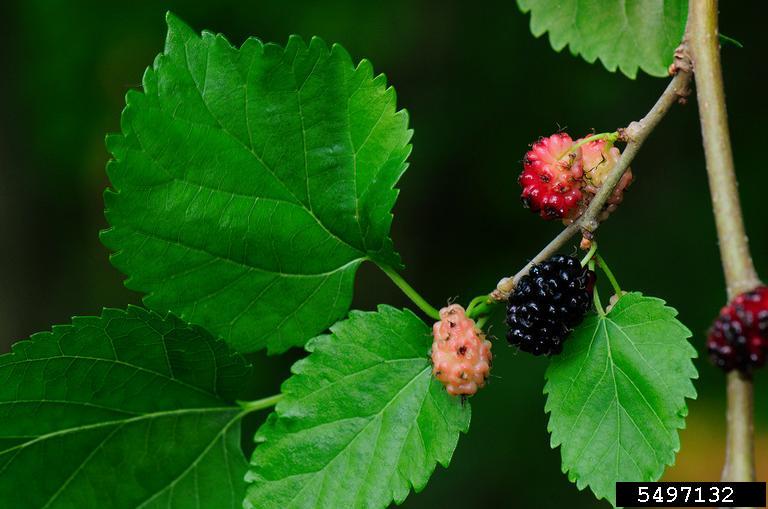Bareroot Plant Material
Red Mulberry
Red Mulberry
Couldn't load pickup availability
25 plants per unit
Red mulberry
Morus rubra, or Red mulberry, is native to North America, including Kansas. It grows to 30 to 50 feet in height and width. Its growth rate is moderate.
Leaves, Stems and Fruit
Lobed and egg-shaped shaped leaves often occur on the same tree. They are simple leaves with a pointed tip, and they alternate along the stem, growing up to 7 inches long. The upper leaf surface is rough, like sandpaper, with the lower surface being soft with small hairs. Flowering occurs in the spring with male and female flowers on separate trees. Fruit is a multiple drupe, similar to a blackberry, varying in color from red to a dark purple, ripening from June through August. Fruit is edible. Bark is a dark brown and may be smooth or scaly. They branches are covered with short hairs.
Uses
Wildlife Habitat
With its dense crown and heavy fruit crops, the Red mulberry provides both summer food and year-round cover. It is an excellent wildlife plant used by a variety of birds and mammals.
Windbreaks
Red mulberry is an excellent windbreak species throughout Eastern Kansas. It is good for the middle or outer row on multi-row windbreaks. It also is used as a single row field windbreak.
Timber
Red mulberry can be harvested for timber production. This wood is often used for fence posts and furniture.
Human Food
The fruit is used for human consumption.
Adaptation and Soil
Red Mulberry is adaptable to the Eastern half of Kansas and is planted in moist, well drained soils. Red mulberry is found in floodplains, river valleys,, and moist hillsides.
Spacing
Space seedlings about 10 to 15 feet apart.
Culture
One-year-old, bare-root seedlings (12-18 inches tall) are used in conservation plantings. Red mulberry prefers moist soils but can handle temporary drought. Good survival and growth rate can be expected with proper site preparation and weed control.
Pests
There are no major insect or disease problems.



